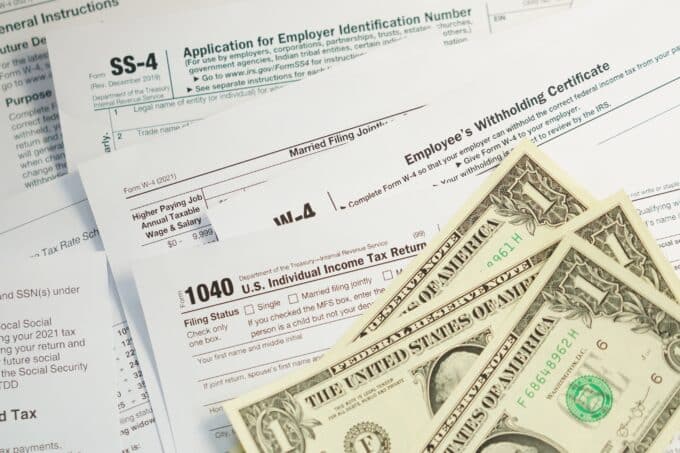TL;DR – Listen to the article post:
We conducted a survey where we asked dentists what they were most interested in learning more about. Tax reduction and tax write-offs were one of the top requests. You asked and we listened, so instead of setting this up with a cute story, I’m just going to jump straight into it.
Just so everyone is on the same page, a tax deduction is a direct reduction of your taxable income. For example, if you make $200,000 and you have a $10,000 tax deduction, the IRS will consider your taxable income $190,000. (And yes, a tax deduction is the same thing as a tax write-off).
Tax Write-off #1: Kids on Payroll
Do you spend money on your kids or save for their future? Great. Let’s talk about how you can do that more tax efficiently. First, you give your child some sort of job and put them on payroll. We’ve seen anything from infants being models on a dentist’s website, to teens helping with the office. You will have to pay them a reasonable amount for the job they are performing. It might be hard to justify paying a 2-year old $10,000 for looking cute, but hey maybe you have a really cute baby ♀️.
You would pay your child up to the standard deduction. In 2023, that is $13,850 (and likely to go up in following years). By keeping it under the standard deduction threshold, you won’t have to file taxes for them. Keep in mind the money has to be used for the benefit of the child. You could consider funding a Minor Roth IRA or placing it in a custodial account in their name. Those dollars could also be used to pay for travel, summer camps, activities, etc. If you have multiple children, this could offer meaningful tax benefits.
Tax Write-off #2: Augusta Rule
Practice owners can use their home to get a tax deduction. You can rent out your home for up to 14 days without reporting any rental income. How does this normally play out for dentists? Well, you could host a quarterly company retreat at your house, pay yourself a reasonable amount in rent. That rent you pay yourself from your business is tax free income to you. You’ll want to check rent prices in your area to make sure you pay yourself a reasonable amount. If you try to push the limits on how much you pay yourself for rent and get audited, you could run into some trouble.
If this strategy makes you raise your eyebrows, you can rest assured that it is written right into the tax code under Section 280A(g). No gray area!
Tax Write-off #3: Health Savings Account (HSA)
HSAs were designed to help people pay for medical expenses in a more tax efficient manner. If used correctly, HSAs are the most tax advantaged accounts out there. They are only available with a High Deductible Health Plan. A HDHP carries a deductible of $1,500 for an individual or $3,000 for a family in 2023. Note – not all HDHPs have an HSA so be sure to double check!
You contribute up to the annual maximum ($3,850 for self-coverage or $7,750 for family in 2023), deduct that amount from your taxable income, and invest those dollars in your HSA. If you use the funds to pay for a qualifying medical expense, you will not have to pay any taxes. Money goes in tax-free, grows tax-free, and comes out tax-free if done correctly. This is why HSAs are one of our favorite accounts!
Tax Write-off #4: Section 179
As practice owners, you are going to spend a significant amount on equipment and other depreciating assets. Section 179 allows you to take an immediate deduction for qualifying expenses. The equipment has to be used for business purposes more than 50% of the time to qualify.
Note that you can deduct the full cost of the equipment in the year of purchase. However, just because you can doesn’t necessarily mean you should. In most cases it makes more sense to take the deduction on its regular schedule. For example, a new practice owner whose income is most likely going to grow over the next several years may consider spreading out that deduction instead of taking it all in the first year when their income is the lowest.
Tax Write-off #5: Retirement plans
And last but not least… retirement plans! You can contribute to a pre-tax retirement plan like a 401(k) or Traditional IRA and take a tax deduction up to the annual limit. For example, a 401(k) plan allows you to contribute $22,500 as an employee plus an additional $43,500 as employer contributions for a total of $66,000 in 2023. If you are 50+ years old, that contribution limit is even higher.
This strategy is generally for those who are in the top tax brackets and need to lower their tax liability. Or you could be someone who just needs the tax deduction in a given year.
If any of these strategies pique your interest, connect with your tax professional or financial advisor. They will be able to walk you through your specific situation and ultimately determine whether you’re a candidate. A lot of dentists have saved a lot of tax dollars through these simple strategies
Are you prepared for the new year? Visit our Year-End Planning Guide!





